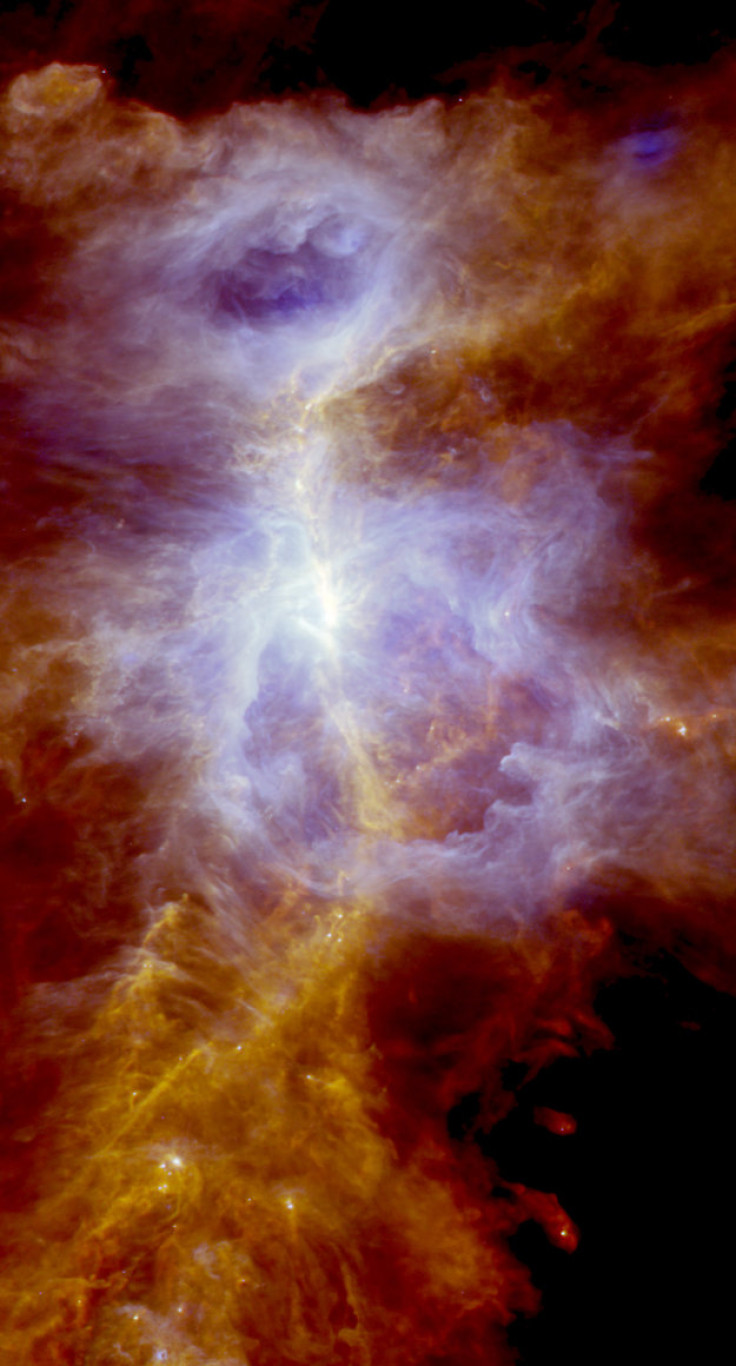Astronomers Capture The Beautiful, Violent, Star-Forming Region Of The Orion Nebula [PHOTO]
Star formation is a violent process, as dense gas clouds give birth to new stars that emit radiation and stellar winds, eventually carving out a section of space to grow. Star-forming regions are of particular interest for astronomers and the Orion Nebula is one of the most-studied star formation areas.

The European Space Agency's Herschel Space Observatory, now defunct after running out of coolant earlier this year, was able to observe the Orion A star-formation cloud and the Orion Nebula. In the new photo, the Orion Nebula is at the center and star formation activity can be seen throughout the image.
The light of the Trapezium Cluster, a group of stars that are roughly the same age, is shining through in this photo, lighting up the Orion Nebula. Stars form within dense gas clouds, after accumulating enough material, eventually becoming a protostar. A protostar marks the very beginning of a new star as this large mass of collected material will become a T Tauri star. The new star is surrounded by a protoplanetary disc which could lead to a new solar system, providing the gas and dust necessary to create new planets, asteroids or comets.
New stars emit huge amounts of radiation, and stellar winds, that shape the surrounding cloud. The photo shows off the variety of cloud shapes, and as the ESA notes, astronomers can determine the nebula's composition based on the various colors within the image.
On the bottom right of the image, new stars are currently forming at the tips of the two red cloud “islands.” The tiny dots of light found within the yellow-orange cloud at the bottom of the image are protostars. The latest image from the ESA highlights the diversity of star formation activity within the Orion Nebula and astronomers will keep exploring this area, just 1,500 light-years from Earth, to learn about the process.
© Copyright IBTimes 2024. All rights reserved.












